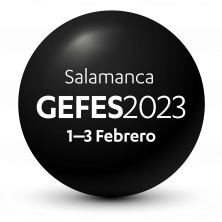
Olivier Dauchot, is a CNRS Research Director, Head of the Gulliver laboratory, at ESPCI-Paris PSL. His research focuses on Collective effects in Soft Matter, which he studies in model experimental systems. Developing collaborations with theoretical teams is one of his hallmarks. He presently concentrates on active matter, programmable matter, and glass forming systems.
Olivier is also leading the outreach activities of the University Paris Sciences et Lettres (PSL), that he sees as an essential aspect of research.
Previously, Olivier was leading the Group Instabilities and Turbulence in CEA-Saclay. At that time he brought significant contributions to the study of jamming and glassy dynamics in granular media, to that of chaotic mixing, as well as to the understanding of transition to turbulence.
Title: When active matter turns solid : from collective motion to collective actuation
Abstract: Active matter is made of a large number of out of equilibrium interacting units, which convert some source of energy into directed motion. In contrast with systems driven out of equilibrium by an external field, or through the boundaries, the departure from equilibrium is local and independent for each active unit. Not so surprisingly, active matter exhibits rich collective phenomena at large scales, such as new types of phase separation and/or collective directed motion. The past 25 years have seen a surge of experimental observations and theoretical progress in the description of such phenomena in the realm of active liquids.
There are however a number of circumstances under which the description in terms of liquids is not suited. One can think of ants building solid bridges out of their bodies, meta-materials made of mechanically connected engines, cohesive cell layers or simply very dense assemblies of self propelled particles forming a glass or a crystal. In such cases a description in terms of elastic solid is likely to be more appropriate. However very little is known about the actuation of an elastic lattice by polar active particles, the orientations of which may couple to the displacement field.
In this talk, I will present very recent experimental and theoretical works aiming at developing this new path of research in active matter. Doing so, we shall unveil a new type of collective phenomena, namely collective actuation, and discover how the coupling between linear elasticity and activity leads to a rich selection mechanism of the actuated dynamics.
